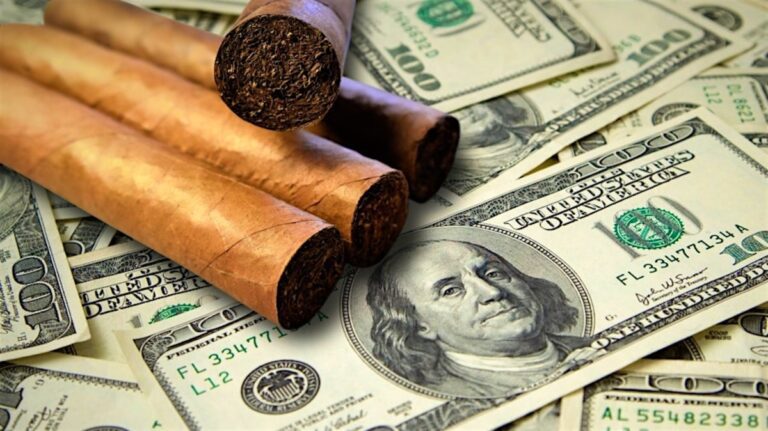🎧 Listen to This Article
New tariffs on imported goods, particularly Nicaraguan cigars, are set to raise prices for U.S. cigar enthusiasts, causing ripples across the premium cigar industry.
A Rising Price Tag for Cigar Lovers
On April 2, 2025, President Donald Trump’s sweeping tariff policy on imports stunned many industries, with the cigar business being no exception. The immediate consequence is an increase in prices for cigars, lighters, and accessories, potentially altering the landscape for cigar enthusiasts across the United States. While many predicted inflationary pressures, few anticipated how swiftly these tariffs would impact one of the world’s most beloved luxury leisure items: the handmade cigar.
The Tariff Shock: A Breakdown of the Implications
Starting on April 9, cigars from the Dominican Republic, Honduras, and Nicaragua were subject to new tariffs of up to 18%. Nicaraguan cigars, the leading product in the U.S. market, now carry an 18% tariff—significantly higher than their counterparts from Honduras and the Dominican Republic, which face a 10% increase. This tariff is not just a policy shift; it represents a heavy financial burden on an industry reliant on imports. For U.S. cigar lovers, this means higher prices at the counter.
Initially, the tariffs were set to apply across the board, but following public pushback and concerns from global partners, President Trump announced a 90-day “pause” on most of the tariff increases. During this period, countries like Nicaragua were reduced to the same 10% tariff level as the Dominican Republic and Honduras. However, this reprieve is temporary, and industry experts predict that further tariff changes will likely occur in the coming months.
The Ripple Effect on Consumers and Retailers
For consumers, this means a rise in prices on their favorite cigars, lighters, and accessories. Industry experts estimate that cigars could cost anywhere from 50 cents to $2.10 more each in zero-tobacco tax states, and even more in states that levy higher tobacco taxes. In practical terms, this means that a box of 25 cigars could see an increase of anywhere from $12.50 to $52.50 or more, depending on the brand and origin.
Drew Newman, of J.C. Newman Cigar Co., notes that the tariffs are likely to drive long-term price increases. “If these tariffs remain in place, we expect the cost will be passed onto consumers,” he said. Similarly, Lissette Perez-Carrillo of E.P. Carrillo Cigars pointed to inflationary pressures compounded by the new tariffs, which could further push prices upward.
While some companies are waiting to pass on the tariff costs until their inventories are exhausted, others like Rocky Patel expect price hikes to be seen by June. The challenge for retailers is balancing rising costs with the need to remain competitive in an increasingly cost-conscious market.
The Complexities of Cigar Production: A Global Supply Chain Under Stress
Handmade cigars are one of the most import-dependent products on the market. The process involves tobacco grown in multiple countries, including Ecuador, Mexico, Cameroon, and the U.S., with cigars rolled in countries like Nicaragua, the Dominican Republic, and Honduras. The box, band, lighter, and even the cigar cutter are often sourced from China, France, and other global suppliers, all of whom are now impacted by tariffs as well.
With almost all handmade cigars in the U.S. being imported, and the tobacco for even U.S.-made cigars often coming from abroad, the ripple effects of these tariffs will be far-reaching. This is especially critical for a product that operates on thin profit margins, where the added cost at the import level will inflate prices at every step in the retail chain.
Uncertainty in the Market: What Lies Ahead for the Cigar Industry?
As the industry braces for higher prices, some industry insiders are predicting a shift in consumer behavior. Craig Cass, owner of several Tinder Box cigar stores in the Carolinas, believes more cigar enthusiasts will seek out value-priced cigars or limit their consumption of premium cigars altogether. Others, like Michael Cafagno of Tobacconist of Greenwich, remain hopeful that the industry can weather the storm as it has in the past, referencing the challenges faced a century ago when tariffs on Cuban cigars were as high as 65%.
Despite the political and economic uncertainty surrounding these changes, industry veterans like Drew Newman are optimistic that the cigar community will persevere. “We’ve dealt with adversity before, and we’ll do so again,” he said.
The Final Word: The Future of Cigar Tariffs in the U.S.
With the clock ticking on the 90-day tariff pause and the PCA trade show looming, the industry is left waiting for clarity. Will the administration adjust the tariffs further, or will they remain in place for the long term? Either way, the outlook for cigar lovers in the U.S. points to rising prices in the near future.
For the time being, the cigar community must adapt, potentially absorbing some of the cost increases, while simultaneously seeking ways to continue to deliver quality cigars at reasonable prices for American consumers.
For further details, clarification, contributions, or any concerns regarding this article, please contact us at editorial@tax.news. We value your feedback and are committed to providing accurate and timely information. Please note that our privacy policy will handle all inquiries



